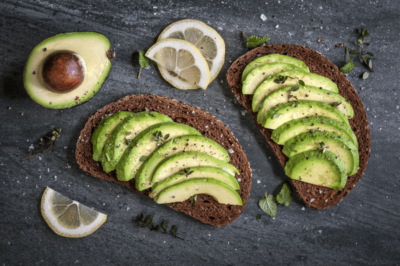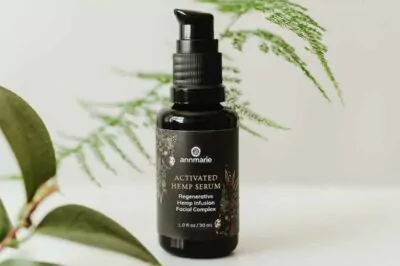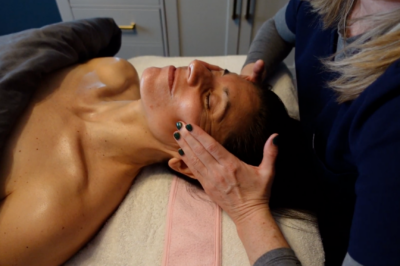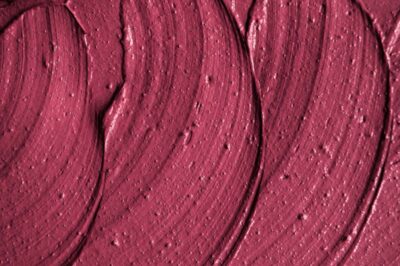Table of Contents[Hide][Show]
You’ve probably heard the news. Recent studies show that the “low-fat” diets trend wasn’t that good for us after all.
We thought the key to avoiding heart disease was to cut back on all fats, but it turns out that’s not necessarily true. Researchers have reported that avoiding fats doesn’t help people reduce their risk of heart disease. Some studies even found that avoiding fat—especially healthy fats—could actually increase risk of stroke.
Now, researchers have recommended we add so-called “healthy fats” back into our diets—foods rich in omega-3 fatty acids, for instance, like flaxseed, walnuts, salmon, and the like (see below for a list). Good fats help us absorb nutrients, support healthy membranes in the brain, synthesize hormones, tame inflammation, and support healthy, vibrant skin!
Here’s more on what fats can do for your skin and your appearance, which ones you should avoid, and which ones you should add to your plate today to maintain that healthy glow.
How Does Eating “Good” Fats Help Skin?
Skin relies on essential fatty acids (EFAs), which are unsaturated fats that our bodies don’t naturally produce, but are necessary for us to stay healthy and keep our skin beautiful. These include arachnoidic acid, linoleic acid, and linolenic acid, which are all found in cold-pressed oils, seeds, cold-water fish, and other sources.
If you’re not getting enough of these EFAs in your diet, your skin may show the following symptoms:
- Dryness, flaking, scaling
- Cracking and peeling
- Dullness
- Dandruff
- Inflammation or redness
- Increased breakouts
- More flare-ups of psoriasis, rosacea, and eczema
- Sagging and bagging
- Premature aging
This can become so serious that problems escalate. Some studies have found, for example, that participants who weren’t getting enough fatty acids developed visible skin abnormalities. A study done in 2013, for example, found that mice deficient in fatty acids were more likely to develop atopic dermatitis. An earlier study found similar results, showing that a deficiency in EFAs leads to inflammatory skin conditions in both animals and humans.
What Does Eating More EFAs Do For the Skin? Here’s a Glimpse:
- Keeps cell membranes intact and functioning properly. This helps skin hold onto nutrients and moisture, while flushing out waste products.
- Reduces acne breakouts by balancing hydration in the skin. Without enough EFAs in the diet, the skin turns dry, prompting it to produce more oil to compensate, which can result in more acne.
- Reduces cellulite by keeping skin cells healthy and flexible.
- Reduces inflammation, which can decrease flare-ups of psoriasis and other skin conditions.
- Could reduce the risk of skin cancer, by reducing the inflammation caused by UV rays.
Do “Bad” Fats Harm Skin?
While we need good fats to enjoy healthy skin, there are some fats that can actually harm skin, so it’s important to know the difference.
So-called “bad” fats are also called “trans” fats. These are the ones that increase our risk of heart disease because they raise LDL (“bad”) cholesterol, lower HDL (“good”) cholesterol, and are thought to cause inflammation in the body. Inflammation in the body means inflammation on your skin—redness, acne, and a breakdown of structure that leads to sagging.
You can also think of trans fats as hydrogenated oils. Limit anything with hydrogenated oils (such as the items listed below) and you’re likely to avoid trans fats.
- Baked goods like cookies, cakes, pies, and frostings.
- Fried foods—studies have actually shown these to raise inflammation in the body.
- Processed snacks in a bag or can, including chips, and others with hydrogenated oils.
- Creamers and margarines—check the label as these may contain partially hydrogenated oils.
“Processed flours, sugars, and trans-fats cause inflammation,” says Dr. Doug DiOrio, medical director of integrative medicine for the OhioHealth Bing Cancer Center. “That sets the body up for a carcinogenic effect and makes skin more susceptible to damage.”
Most other fats are good for your skin—unless you’re eating too many of them. Here, we’re talking specifically about fats with omega-6 fatty acids. Though these help stimulate skin and hair growth and maintain bone health, too many can cause inflammation.
According to the University of Maryland Medical Center, the typical American diet contains 14-25 times more omega-6 fatty acids than omega-3s, which can throw the balance out of whack and increase inflammation. (The recommended ratio is 2:1 to 4:1 omega-6 to omega-3.) So enjoy the following fats on occasion if you like (we listed only the healthy ones!), but make sure you’re getting more of the healthy fats listed in the next section.
Healthy Fats Rich in Omega-6 Fatty Acids (Enjoy in Moderation)
- Evening primrose oil
- Flaxseed oil and flaxseeds
- Hemp seeds and hemp seed oil benefits
- Chicken (humanely raised) and other poultry meat
- Red meat (we recommend grass-fed, which often has even more omega-3s than omega 6s, but you’ll get both)
- Peanuts
- Pistachio nuts
- Pumpkin seeds
- Raw sunflower seeds
- Acai
- Borage oil
Note: Many of these foods have both omega-6 and omega-3 fatty acids in them, so you may see them in both lists!
You probably aren’t low in omega-6’s, so focus on eating more omega-3 fatty acids into your diet for skin that radiates health!
Healthy Fats High in Omega-3’s (Try to Get More of These Into Your Diet):
- Fatty fish like salmon, sardines, and mackerel, tuna (be wary of the mercury content), anchovies, and black cod
- Walnuts
- Flaxseeds
- Avocados
- Dark green leafy veggies, like kale, spinach, and collards
- Chia seeds
- Grass-fed beef
- Pumpkin seeds
Do you notice a difference in your skin when you’re not getting enough healthy fats? Please share any tips you may have.
Sources:
Fujii M, et al., “Deficiency of n-6 polyunsaturated fatty acids is mainly responsible for atopic dermatitis-like pruritic skin inflammation in special diet-fed hairless mice,” Exp Dermatol., April 2013; 22(4):272-7, http://www.ncbi.nlm.nih.gov/pubmed/23528213.
David F. Horrobin, “Essential fatty acid metabolism and its modification in atopic eczema,” American J Clin Nutr., January 2000; 71(1):367s-372s, http://ajcn.nutrition.org/content/71/1/367s.full.
Kristin Campbell, “Health Watch: The Link Between Skin Cancer and What We Eat,” Columbus CEO, May 2014, http://www.columbusceo.com/content/stories/2014/05/health-watch-the-link-between-skin-cancer-and-what-we-eat.html.







Mary, you can find grass fed beef in health food stores like Whole Foods. If you go to the meat counter, they often have “Pastured” beef which is typically grass fed (but sometimes the cows may have been supplemented with grains. To find out, you’d probably have to ask the butcher or contact the farm where the meat came from).
What I’ve noticed here in Atlanta is that more and more stores are carrying grass fed beef. When you look in the section where ground beef is prepackaged, check to see if your grocer has any marked as “grass fed beef.” I’ve seen it in Whole Foods for sure, but also Publix and Kroger stores that carry more organic options.
Another thing you could do is stop by your local farmer’s market. Either way, you should be able to find an option in your area. It’s super important for you skin and for your health.
Actually cutting out meat & dairy entirely is the best for your skin/health.
Just exactly where do you find grass fed beef that I keep seeing mentioned. What I find just says no hormones or anti-biotic used. The package doesn’t say what the animals have been fed.